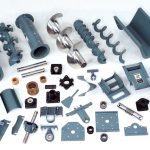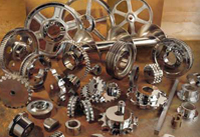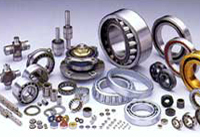
Image Via: Thomas Conveyor Company
Conveyor systems are used in just about every manufacturing industry, industrial industry, and engineering industry application you can think of. Conveyor systems are far from new, they have been around for over a century and yet, they are still used today. The systems used today are not the same systems that were used 100 years ago, they have been greatly improved. Thomas elaborates on how commonly conveyor systems are used and how they are at work in our daily lives, “Conveyor systems are mainstays in industries where quick and fast handling of packaging and shipments is a must. These apparatuses are widely used to transport and move large and heavy industrial and agricultural material. They are also used in companies or industries where self-unloading of bulk freighters are needed for moving items. Conveyor systems, often called conveyor belts, work by using two pulleys that continually loop over the material that rotates over them. This is done with endless procession of hooks, gears, buckets, and a wide rubber belt. The belt is then supported by a series of rollers along the path. The rollers in the center of the device prevents the conveyor from sagging in the middle while it is carrying a load. Vertical conveyors and other types of conveyor systems are able to move a wide range of goods and products in a multi-directional pattern. They are usually equipped with load transporting platforms and drive chains. Conveyor systems are also made in a wide variety of sizes and configurations. Conveyor systems are not only found in industrial manufacturing sites, but also are commonly found and used in grocery stores. These systems carry the groceries items from one end of the check out counter to the other where it is bagged. Conveyor systems are also used for moving sidewalks and escalators. How about the large, complex system of conveyors used in the airport and post office? These conveyor systems are essential to move the sheer volume of luggage, mail and packages from one place to another…Conveyor systems often save companies a large amount of time and money.”
Conveyors systems may look like a simple enough operation but there are actually many components involved to make a conveyor system work that is both seen and unseen. Conveyor components must be routinely inspected and maintained to prolong their life and the life of the overall conveyor system. Below are 13 types of conveyor components that you will often find at work in a typical conveyor system.
13 Types of Conveyor Components
- Bearings-Pillow Blocks / Take Ups
- Belting-Heavy Duty / Light Duty
- Chain Drives-Roller Chain/Engineered
- Chain & Sprockets
- Clippered Fasteners / Alligator Fasteners
- Flexco Fasteners
- Idlers-Balls & Roller
- Pulleys- Drum/Wing/Lagged/Motorized
- Reducers-Shaft Mount/Gearmotor/Worm Gear/
- Screw Conveyor Components
- Skirt Board Rubber
- V-Belt Drives – V Belts/Sheaves
- Weld Lag


















